In her photographs and vignettes of Bangladesh, writer and photographer Kay Ugwuede reflects on human connectedness.
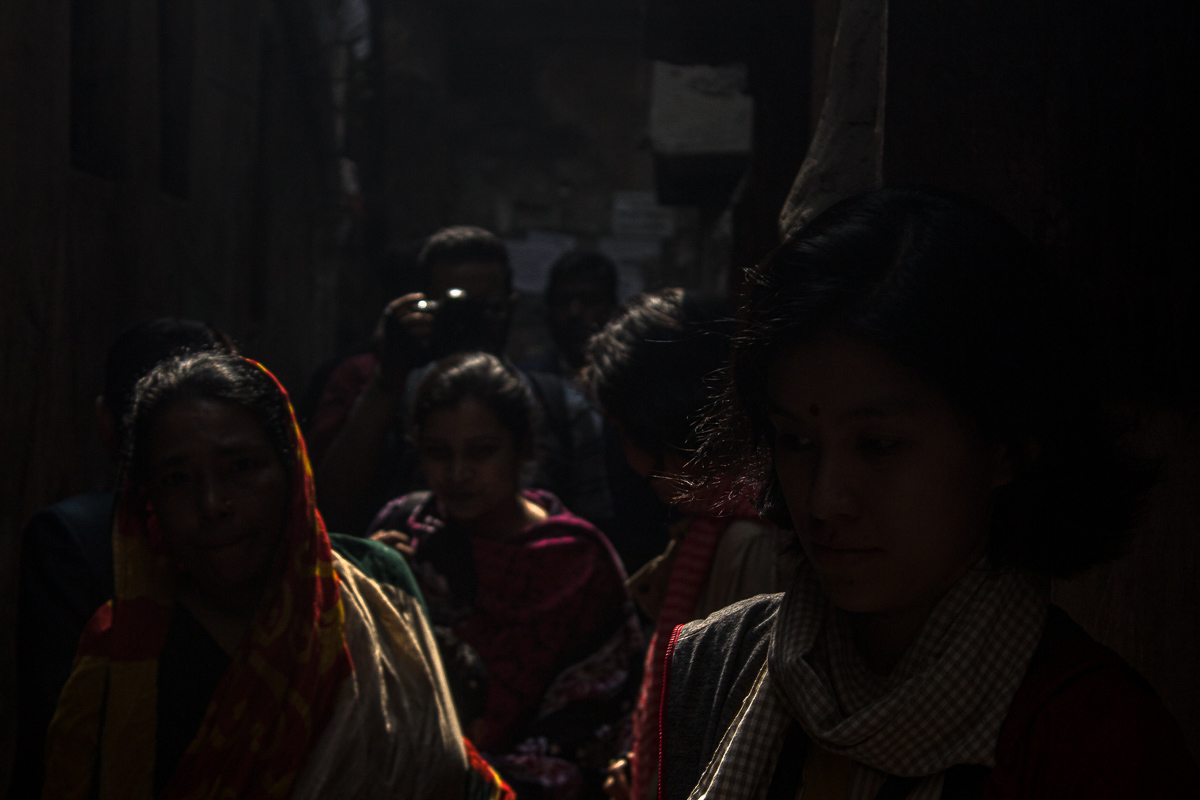
On the first floor of the Shilpakala Academy, Dhaka, Bangladesh, an opening ceremony. Surrounded by guests at the Dhaka Art Summit 2020, Bengali women move through Héctor Zamora’s still-wet clay pots which encircle a fat lone pillar, indenting their sides and rims with footprints. From the stairwell leading to the second floor, the scene is a mismatch of wholeness and defect. A few pots—metaphors for subjugation in Bengali society—spared from the women’s tramping, stand in the midst of ruins. It’s a performance of inversion. What better way to begin a week-long series of exhibitions whose premise is movement, of the significant kind that the word seismic connotes?
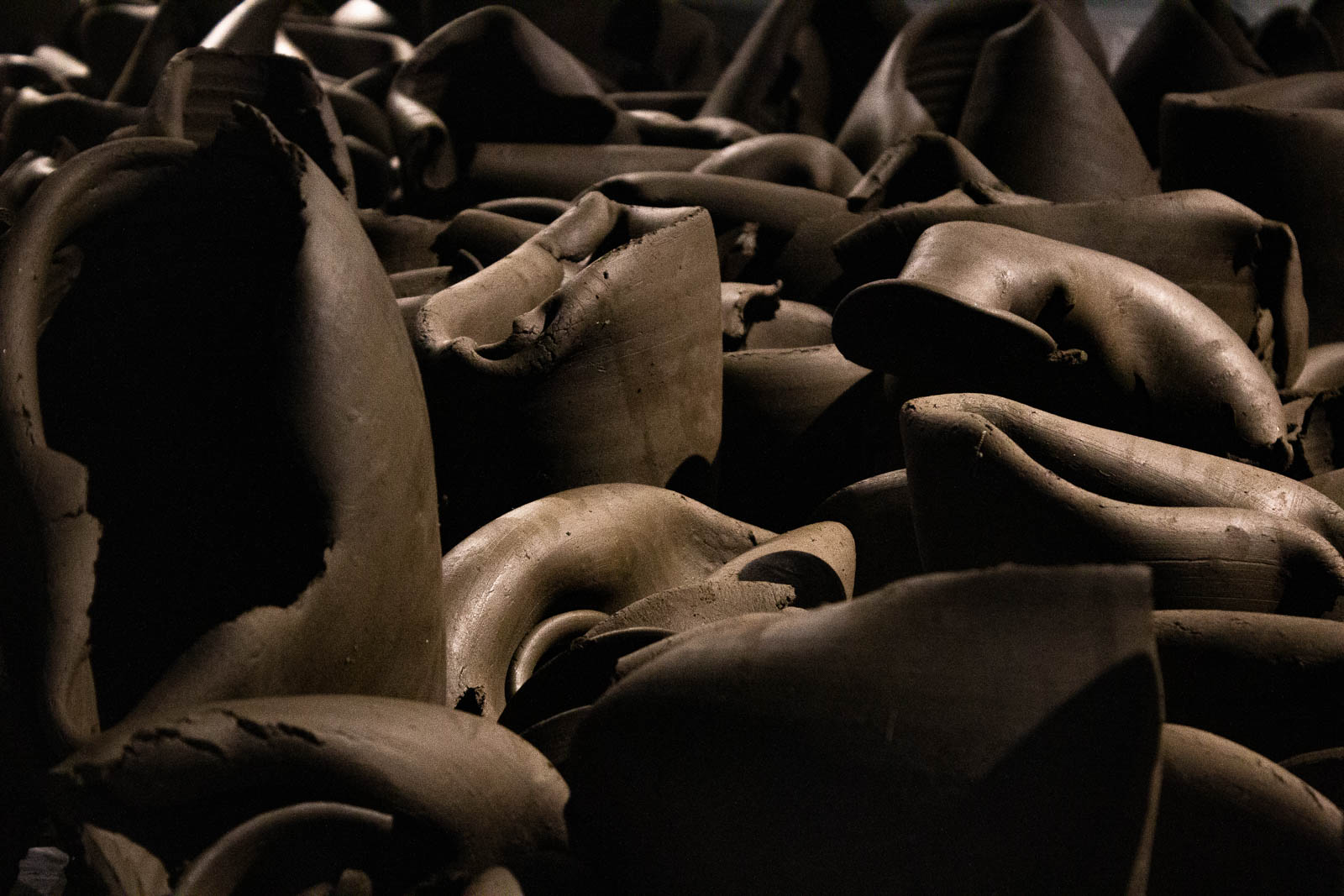
When we arrive in January of 2020, three weeks prior, we have no prescience of how the whole world would quickly go into its own seismic shifting. We are a group of Bengali, Belgian and Nigerian photographers and writers travelling under the Invisible Borders organization and documenting border experiences. As we traverse the country on the fringes, we put a good distance between us and the panic those early pandemic days elicited, and it is not until February when we return to the capital, Dhaka, that the intensity of this underbelly rumbling begins to settle.
Looking back at the photographs now, particularly this close-up shot of trampled pots with its patterns of light and shadow, I think about interconnectedness, the earth spread out underneath each of us, the skies above us, our shadows falling against each other.
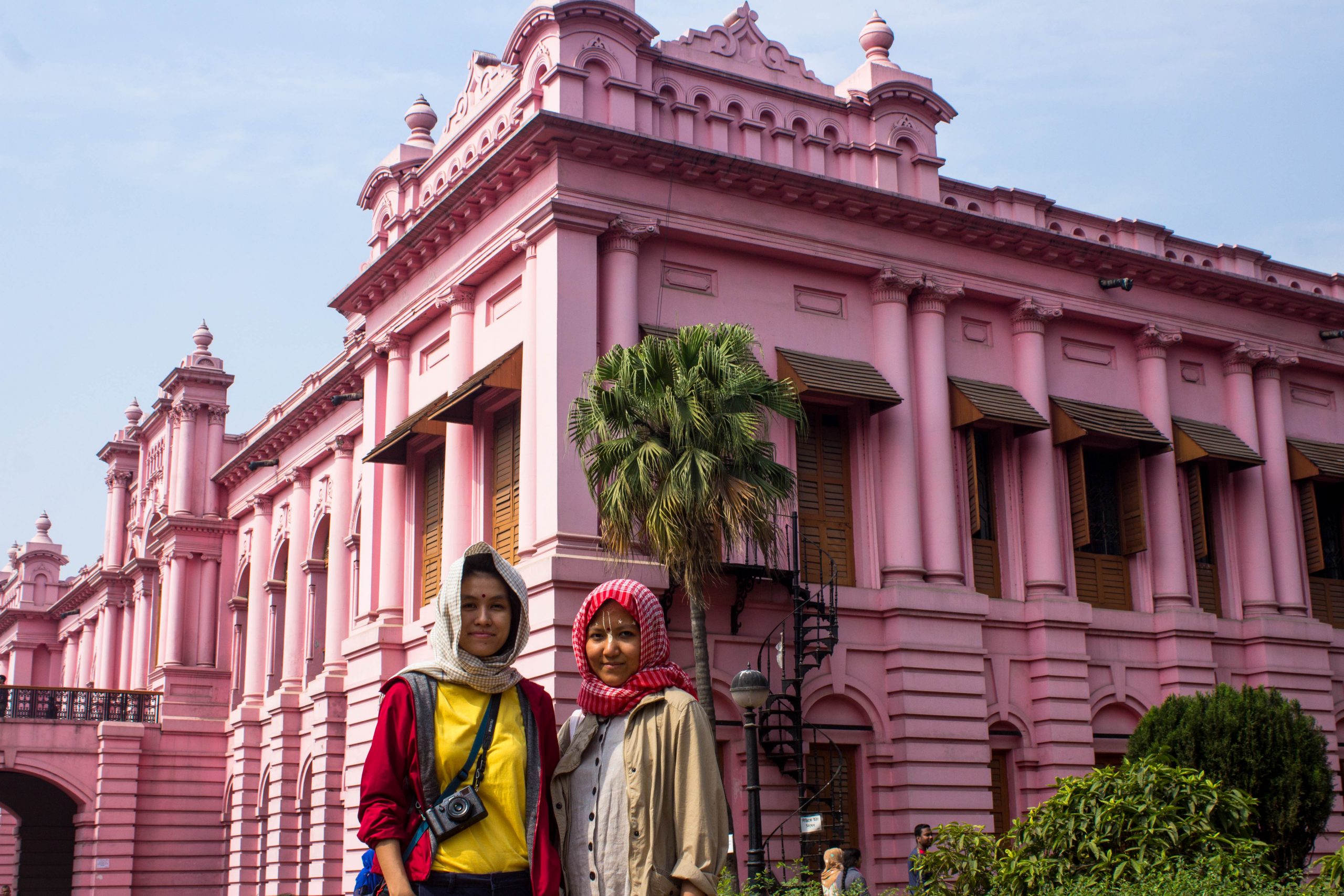
A few days before we are due to leave Dhaka, I take out my camera from its hiding spot, but am not sure what I want to photograph. Why I want to photograph, though, is simple: to remember my time here.
In two places where we visit, however, cameras are not allowed. The first, which we visit the day after the Dhaka Art Summit opens is Bangladesh’s parliament building: Jatiya Sangsad Bhaban. Its design is a marvel of Brutalist architecture: enormous cuboid pillars, concrete-looking finishes, very few windows, abundant light, space.
The second, Ahsan Manzil, is the pink building before which Rita and Khin, two Burmese photographers with a contagious desire to see Dhaka, stand while I take a photo. Ahsan Manzil was the home and the seat of power of aristocrat Khwaja Abdul Hakim, whose lineage, now known as the Nawab of Dhaka, were highly influential in the East Bengal region from the mid-nineteenth century.
My recollections of the interior of both buildings have faded over the months and with it, the awe those visits elicited. What I recall clearly, however, was my surprise, then amusement, at visitors in our tour group who had managed to steal in phones and portable cameras and stolen photographs when there was no interference from security details or tour guides.
Is presence ever enough? Or are we constantly aching for memory jars to hold moments like this for as long as we can?
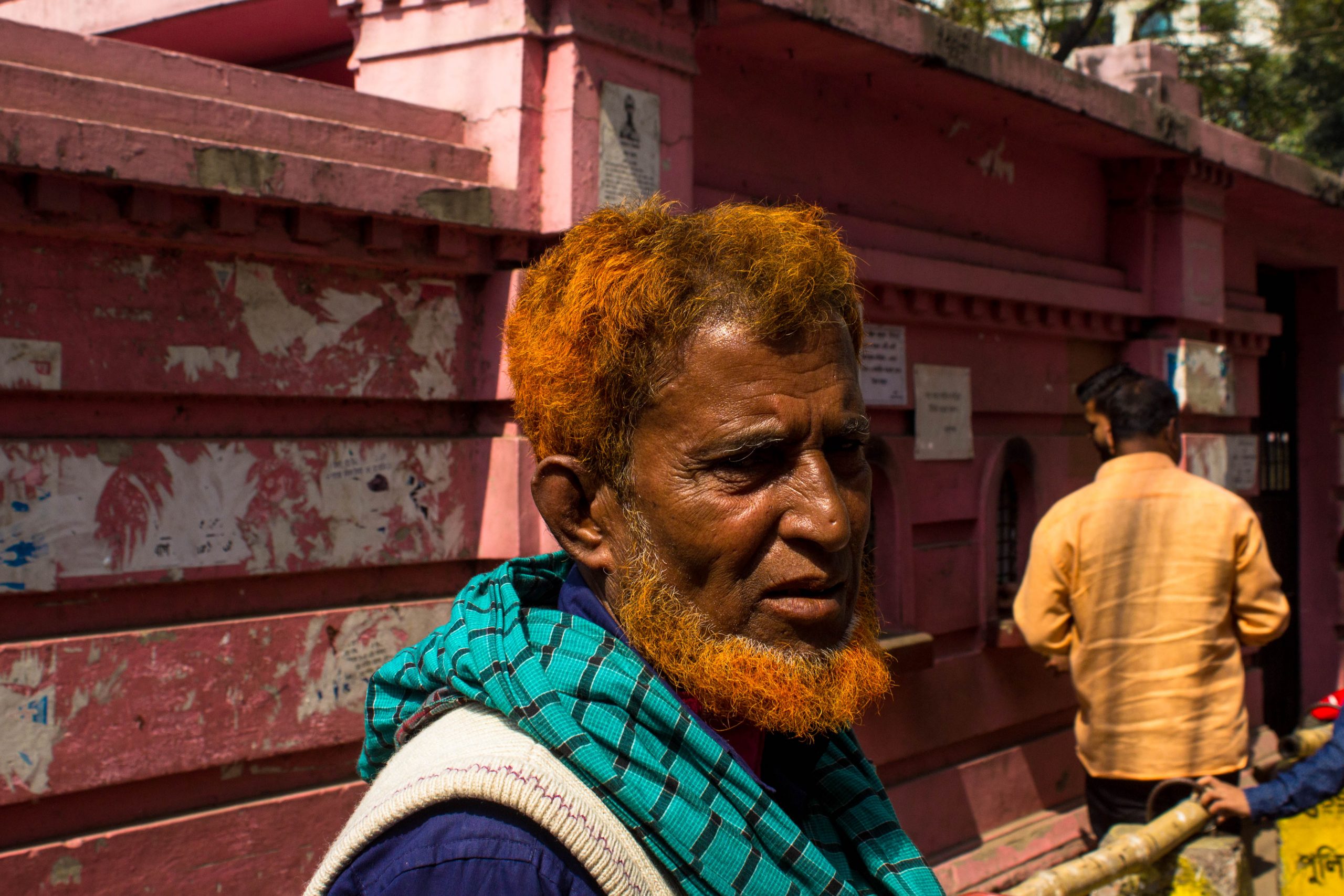
We are moments away from the gates of the Ahsan Manzil Museum when he comes into view. I stare intensely at his hair as we walk past until I finally ask Sakib, a generous Bengali photographer who offered to show us around, if he would pass on my request to photograph him. He obliges, turns and I take one photo from where I stand. Perhaps it is the sun or his impatience but he doesn’t look very pleased. I do not remember if I asked the question then or prior: what turns the hair this bright orange?
I am curious because many months back, I came across a similar photograph made of a man somewhere in northern Nigeria and asked the same thing: what turned his hair a bright orange? Henna, in case you have met such a man and are wondering too.
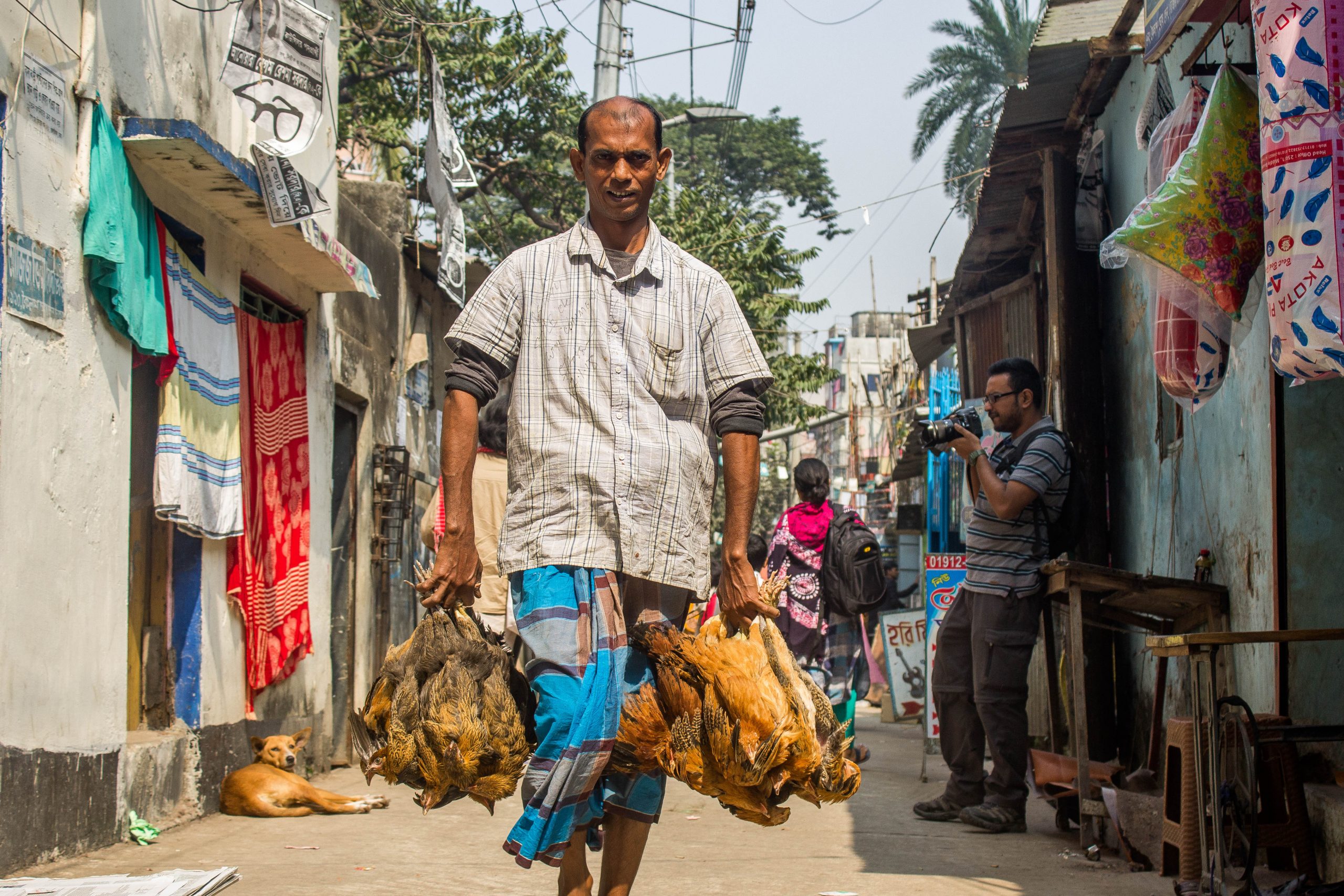
In Old Dhaka, we meander through dark and bright alleys that lead, every now and then, into the exhausting swirl of the old city. In one such alley, I spot a man coming towards me clutching a bouquet of chickens by their legs. They cluck and squawk but remain relatively still.
Wary about photographing strangers without having obtained their permission, I attempt to capture just his hands and its contents. But he notices my interest and moves to the centre of my frame. He slows his pace and, through the camera’s lens, our eyes stay asking and confirming if I’ve got a satisfactory photograph.
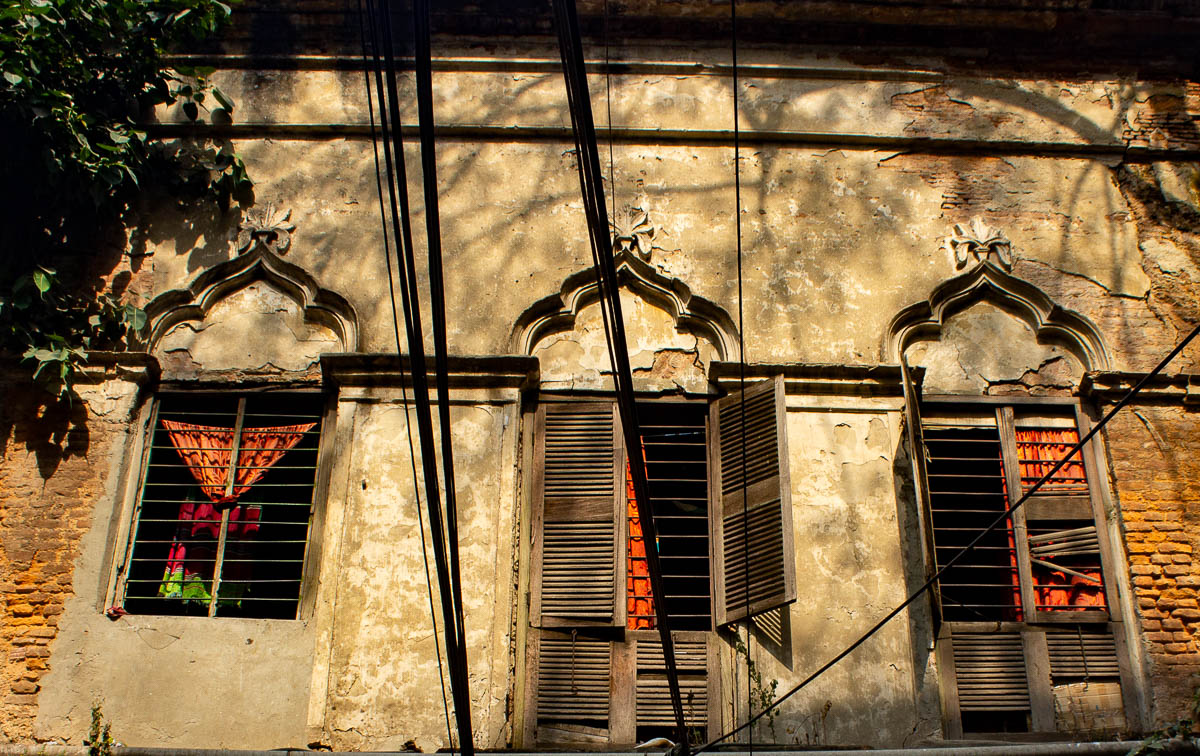
Beauty Boarding, named after a beloved daughter, is a ruin recovering. Beautiful even in disrepair. It looks mythical, like a deserted temple. And perhaps it was something of a temple, or a refuge for artists and journalists; men and women searching for and offering us meaning through their life’s work.
An image comes to mind: a severed head swimming in what appears to be a dusty haze or milky water, captured by the late Bangladeshi journalist Rashid Talukder at the Rayer Bazaar brickfield, Dhaka. It may have been the head of a poet, or a painter, or journalist, someone who once had tea and ate morsels of rice and vegetable sauce in the kitchen on the ground floor of Beauty Boarding.
The photo was taken on December 16, 1971 as a new country fought its way into existence, into agency. Intellectuals who would help make sense of the realities and future of that country were lured to the brickfield and murdered. There was an attempt to demolish the house too, no one is sure why it still stands.
In the kitchen on the ground floor, an enthusiastic restauranter lays out a bountiful spread of what Sakib describes as authentic Bengali food. While we eat, we talk, about writing and photography and traditional Bengali food served in stainless platters and eaten with the hands.
Every dip in the bowl, a token of remembrance.
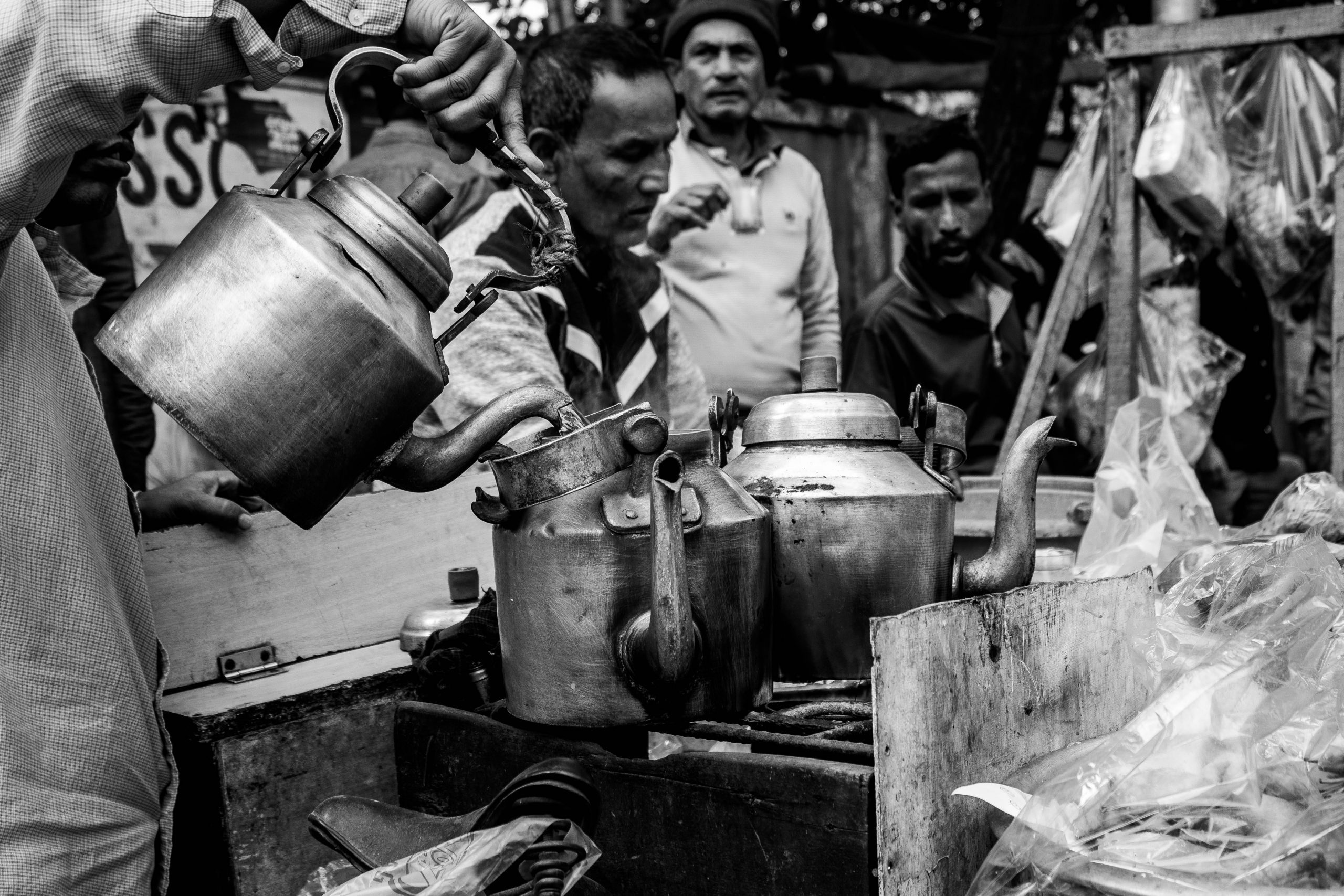
Tea is many things in Bangladesh, including a vehicle of maltreatment. In the four weeks we spend in and out of Dhaka, it is an invitation from strangers like the woman at Benapole behind whose house runs a river heavily contended over by India and Bangladesh, or the woman at a quarry in Jaflong who insisted we come into her tent for chai and wanted to trade all the children milling around her for some cash.
Chai or coffee? Chai, always.
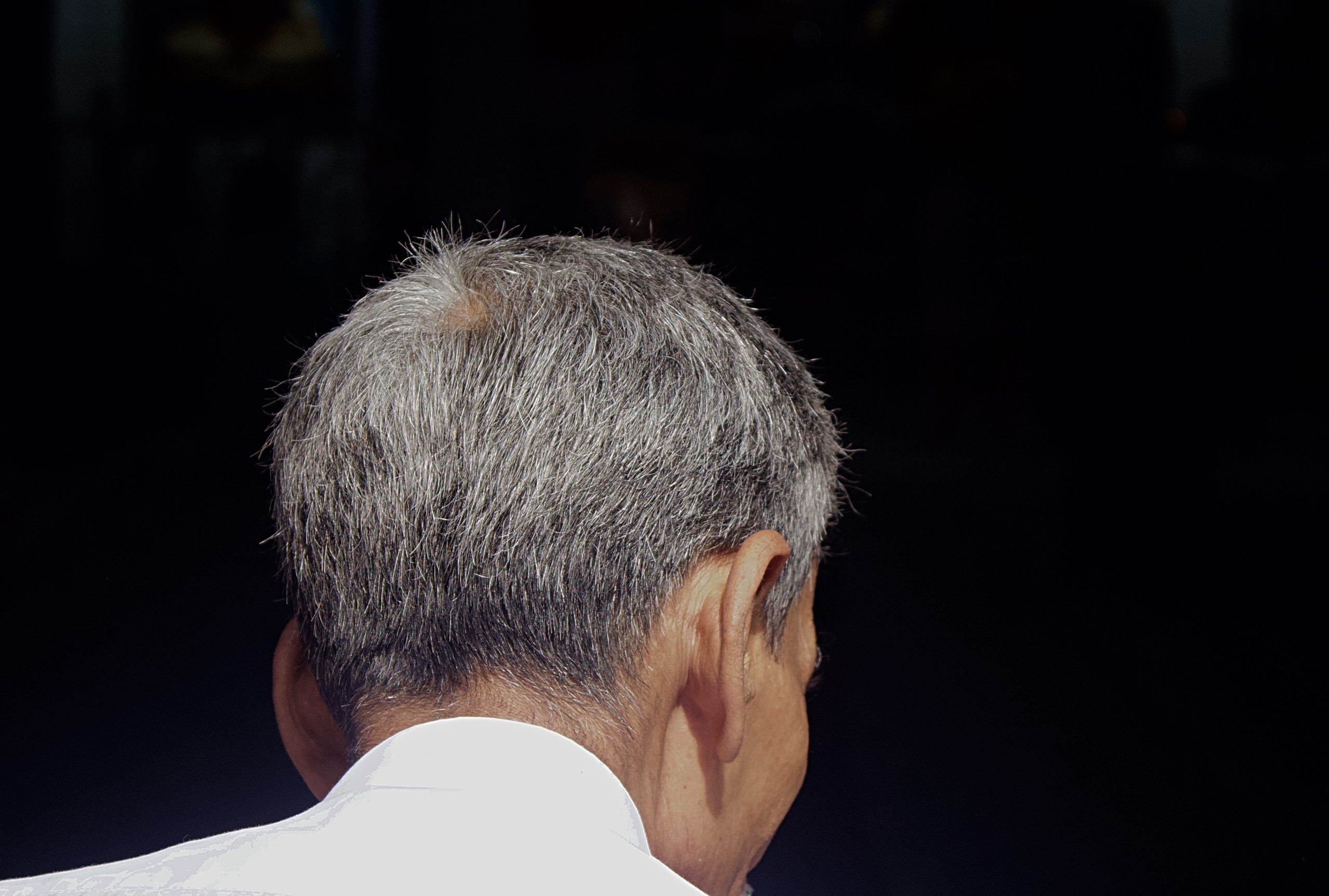
There are locations one does not expect a place of worship to be situated specifically because worship is often solemn. But right in the middle of a market in Old Dhaka, we run into a pooja shrine where Khin offers the pujari her forehead for blessings. At another turn, we meet a Kali temple where men prostrate and kneel, palms spread open in supplication.
I recall, here, an incident in Hili which mirrors two others recounted about a journey in Mauritania. In A Stranger’s Pose, Emmanuel Iduma writes about two meetings, one in Nouakchott and the other in Nouadhibou. In both encounters, Iduma meets a group of young men and a pair of teenage girls who ask to be photographed and then leave their images with him.
In Hili, a railway outpost on the eastern border of the country, Emeka, a photographer and the head of our travel party, asks to photograph three colourfully-dressed school girls returning from extra lessons—Shirin, Rita and Moumita. They oblige him. Minutes later, as we walk past the rail line where they sit catching their breaths, they ask to take pictures of us. We stand, and Topu, our guide and in-house singer, takes a few shots with one of their mobile phones. They do not join in the pictures.
In closing, a prayer: remember me as I remember you.




